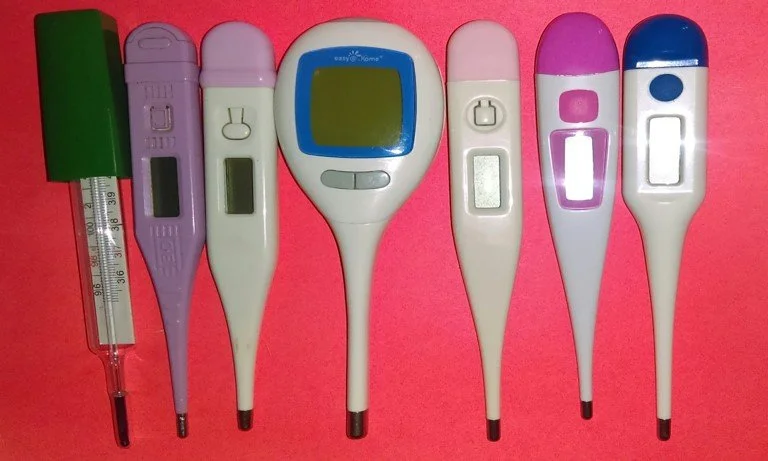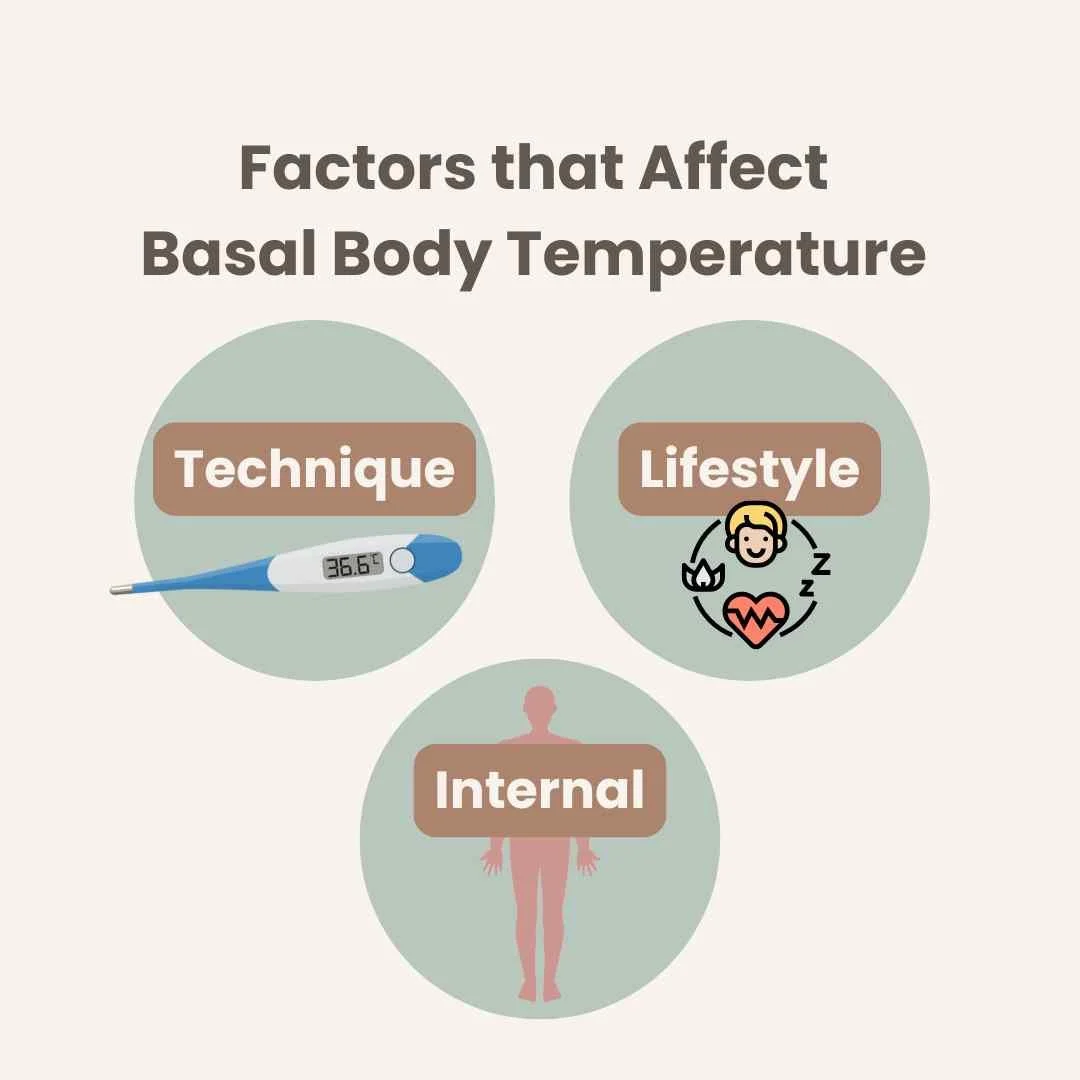Master the Technique of taking your Basal Body Temperature (BBT)
Basal body temperature tracking (BBT) is relatively easy, inexpensive and can give you a lot of information about your body.
BBT is one of the primary biomarkers, along with vaginal secretions, that is tracked if you are using the sympto-thermal method of fertility awareness.
The what and why of BBT
Why do we use it as a primary sign of fertility? BBT is a measure of resting metabolism. BBT is affected by the production of progesterone which occurs after ovulation occurs.
BBT can help us confirm ovulation, not predict ovulation.
What type of thermometer do I recommend?
Thermometers can range dramatically in price, anywhere from $14 to over $400. You do not need a fancy thermometer to accurately capture your BBT.
You can use digital, glass or basal body thermometer, but the thermometer needs to take at least 30 seconds to 1 minute to read.
You CANNOT use a quick read or fever thermometer because they aren’t sensitive enough to measure the slight temperature increase that occurs after ovulation.
Fahrenheit users need a thermometer that measures to at least the tenths place ie 97.7
Celsius users need a thermometer that measures to at least the hundredths place ie 37.57
Thermometer features that you may want to consider:
a backlight so you can read your temperature in the dark
a recall or memory feature that holds a few days of temperatures
how loud the sound is
if you want a wearable device
None of these features are necessary and you can start charting with a cheap BBT thermometer from your local drugstore. You can always get something fancy later.
I’ve been charting for over 7 years and I still use the same $14 thermometer!
Here are a few examples of thermometers that I recommend:
iProven: large screen, backlight, 30 readings recall, soft beep, C or F
iProven: small screen, NO backlight, 1 reading recall, soft beep, C or F
Some of the links included in this blog might be affiliate links. This means that I may earn a small commission for purchases made using these links (at no additional cost to you). All the products that I share are well-researched and/or personally used by me.
When should I take my BBT?
Early in the morning: 5-8am
First thing when you wake up, BEFORE taking a sip of water, making out with your sweetie, getting up and moving around, etc.
Do I have to take my BBT at the same time every day?
ideally you take your temperature within +- 30 mins of the same time, for example between 6:30am-7:30am. Your BBT increases the longer you sleep.
take your BBT same way throughout your entire cycle - vaginally, orally, or using a wearable
try to use the same thermometer throughout an entire cycle before making a switch
How to take your BBT orally:
find one of the heat pockets under your tongue, on either side of the tissue that anchors your tongue to your jaw
place the tip of thermometer into one of those heat pockets
put the thermometer in the same location in your mouth every morning when you take your temp
How to take your BBT vaginally:
insert the thermometer 1-2 inches/ 3-5cm into the vaginal opening and use the thermometer as designed
this can be a great way to temp for people that breathe through their mouths, have sleep apnea, etc. because you may not get an accurate reading orally
How long should I keep the thermometer in my mouth?
Some educators recommend keeping the thermometer in your mouth for up to 10 mins before taking a reading, however for many of us that isn’t sustainable. I’ve personally been charting for over 7 years without doing this and I’ve been able to see clear temperature patterns in my chart.
If you wake up feeling really hot or you are sleeping in a cold room, you can take a moment to cool down or you can put the thermometer on your chest to warm it up before temping.
If you choose to keep your thermometer in your mouth for 10 minutes before you temp, you’ll want to consistently do this every morning you take your temperature.
Stay consistent with HOW your temping, and if you want to make any changes, do it at the beginning of your cycle.
When should I take my BBT in my cycle?
I recommend taking your BBT everyday of your cycle, more so to maintain the habit of taking your temperature everyday.
However, the most crucial time in your cycle in order to determine ovulation would be to temp after your period ends and up until you see a temperature shift in your chart.
If you want to know when you’re going to start your period, you’ll want to temp after ovulation until you notice a temperature drop.
Does the amount of time I sleep time matter?
The short answer is YES. Some educators say you need at least 3 hours of sleep to get an accurate read, and others say at least 5 hours. However, this may not be sustainable for a lot of us that have disrupted sleep.
When my clients have disrupted sleep due to
being postpartum
having young children
breast or chest feeding
navigating insomnia or restless sleep
or working night shifts or swing shifts
I support them in individually coming up with a plan. Taking oral BBT works for some of these clients, while other clients might benefit from a wearable thermometer, like the Tempdrop.
Take your temperature regardless of whether or not you’ve had disturbed sleep to see how these situations affect your body.
When you take your temp, even when the situation isn’t ‘perfect,’ you’re getting priceless insights into how your body responds to our beautifully imperfect human experience.
And just as a reminder, there’s no such thing as a perfect chart. Every cycle will have a few questionable temps that may be off, and that’s okay! The goal is to understand why your body was affected in that way.
What can affect my BBT?
Stress
fever/illness
mouth breathing
irregular sleep
sleeping conditions
alcohol consumption
inflammation- allergies, food sensitivities
travel, time zones, time change
endocrine imbalances
drinking anything before you temp
Not ovulating, on HBC
Find out which factors impact your temperature so you better interpret your charts.
What can BBT tell me about my cycle and overall health?
confirm ovulation, not predict ovulation
if your cycle is anovulatory (you’re not ovulating)
when you’re period will start
early pregnancy - 18 high temps in luteal phase
hormone balance
thyroid and adrenal health
How can I predict my period using BBT?
BBT can indicate when your period is coming because the # of days between ovulation and your period stays fairly consistent
after you identify your temperature rise (here’s a video that teaches you how to id your temp rise), and confirm ovulation has occurred by your temperatures staying high in your luteal phase, your cervical fluid patterns drying up, you can usually expect your period 12-14 days post ovulation
you’ll notice on the day that you get your period, your temperature will significantly drop, usually below your coverline
so when you see a drop in your BBT post ovulation, you can expect your period to come
if your temperatures stay high above your coverline for 17 to 18 days in your luteal phase, you may be pregnant
BBT tracking has been around for awhile for a good reason, it’s relatively easy, inexpensive and can gives you a lot of information about your body.
You can use BBT tracking, along with other signs of your fertility, to prevent or plan for pregnancy, monitor your health, and give you deeper insight into how your internal landscape is affected by the choices you make.
Curious about how to identify a temperature shift in your chart and how to draw a coverline to confirm ovulation? You can read this recent blog post.
Feeling like you would benefit from a private session?
You'll receive expert support on your unique cycle from a certified Fertility Awareness Educator




